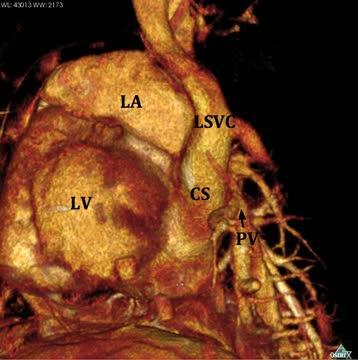
An example of a mouse with TAPVC as seen by microCT. The movie starts off looking from the left side. As the specimen spins you can see the pulmonary veins (PV) connecting to the coronary sinus (CS) from the back. LSVC = left superior vena cava, RSVC = right superior vena cava, LA = left atrium, RA = right atrium, LV = left ventricle.
(Photo Credit: Perelman School of Medicine, University of Pennsylvania; The Children's Hospital of Philadelphia: Nature Medicine)